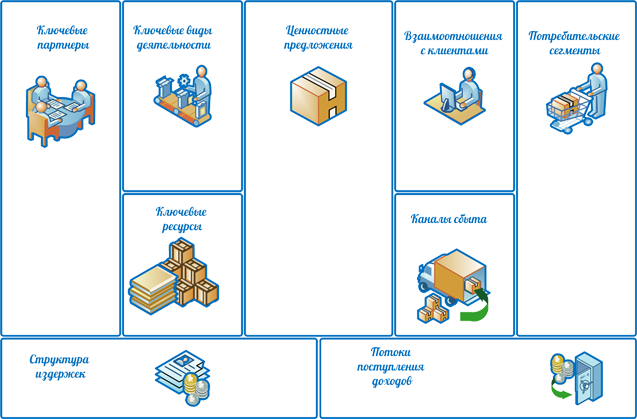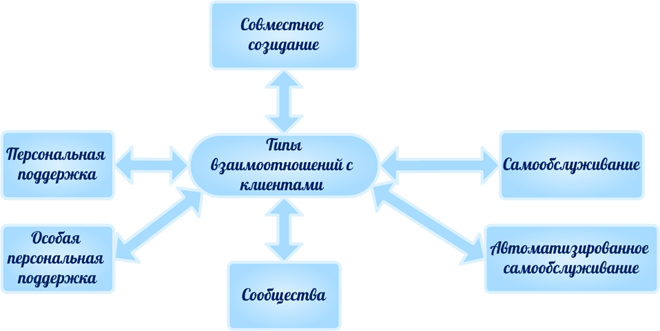Weekend Abstract: Building Business Models
 Almost a month has passed since the previous weekend synopsis , and here I have a fresh topic for you. Today I will try to interest the audience in the wonderful book of Alpina Publisher - “Building business models. Handbook of Strategist and Innovator, Alexander Ostervalder, Yves Pigne (Business Model Generation: A Handbook for Visionaries, Game Changers, and Challengers) .
Almost a month has passed since the previous weekend synopsis , and here I have a fresh topic for you. Today I will try to interest the audience in the wonderful book of Alpina Publisher - “Building business models. Handbook of Strategist and Innovator, Alexander Ostervalder, Yves Pigne (Business Model Generation: A Handbook for Visionaries, Game Changers, and Challengers) .Immediately, I would like to make a reservation that it is simply impossible to outline the entire book with one article, since the material contained in it is too original and sufficiently compacted.
The main idea, I will not be afraid of this word, the textbook is an original approach to strategic business planning. Although the book shows examples of use in government and non-profit institutions.
Business modeling in general is a completely ambiguous process. You never know with absolute accuracy whether a business will shoot or not. As part of the discussion process, the authors suggest the need for a single conceptual “canvas”. They propose to formulate an abstract concept of a business model, facilitating any discussion. The problem with this approach is that it is rather difficult to formalize a simple and concrete, at the same time, universal concept. At the moment in the field of business modeling dominates several similar concepts. And the authors of the book offer us one of the most common.
')
The book proposes the use of a business model template - a general scheme that describes the rules for constructing a specific business model. This template consists of nine interrelated parts, reflecting the logic of the various activities of the company.

Consumer segment

Defines a specific customer base. The client is the heart of the business model, from which all other constructions are repelled. The difference in consumer segments is due to differences in offers, requests and distribution channels.
Value propositions
Assume a set of products that meets the needs of a particular consumer segment and has predetermined characteristics: price, performance, availability, design, etc. Value propositions can be both quantitative and qualitative in nature.
Sales channels
Assume the following stages of product promotion to the consumer, with each channel can include both all stages and some of them.

The authors identify partner and own sales channels, each of which has its own strengths and weaknesses. Finding the right channels can affect the overall success of an entire business. It often happens that a change in the sales channels of an unsuccessful business provides instant profitability growth.
Customer relationship

This block of the template describes all types of relationships with all consumer segments of the company, depending on the motives of the company.
Revenue streams
For each consumer segment, there can be one or several revenue streams. Each channel can have its own pricing mechanism.


Key resources
They allow the company to create and deliver its value propositions to the consumer, ensure interaction with the target user segments and make a profit in the end.
Different business models have different resources. Some companies cannot exist without an extensive logistics structure, while others manage with a single site, but regardless of the type of activity, any company is unthinkable without any key resources.
You cannot make any product out of nothing.
Key Activities
Also an important block of the business model template are activities. The authors classify them as follows:

Manufacturers develop and market their own products, consulting companies and medical institutions provide services, and some companies that provide services to their platform are engaged in its support and development. One of the most prominent representatives of the latter is eBay.
Key partners
In the course of their life, companies acquire various partnerships.

Partnerships can be built to optimize and save on production, reduce risk and uncertainty, as well as within the framework of supply relations and joint activities. It should be understood that almost any company does not have the entire infrastructure to ensure the functioning of its business model.
Cost structure
Determines all expenses of the company for the operation of its business model. This includes the costs of development and production, relations with customers and partners, etc. The “ideal” extremes of this block describe companies that focus on their own value propositions and on minimizing costs. Most often, any business model is between the two extremes and differs by its proximity to one or another variant. The former always strive to ensure the necessary quality of their products, and the latter by any means to minimize the cost of providing their value proposition.
Thus, the authors receive a solid tool for visual planning of activities. The book describes the cases of application of the methodology for analyzing existing business models, and in some cases it helps to find their problem areas, the elimination of which helps to bring companies and organizations to an acceptable level of profitability.
The summary presented to your attention describes only the first part of the book, but, as I have already written, this is the quintessence. For a detailed acquaintance with the research materials I recommend reading the original. It should be noted the original design of the book. In general - must read.
Source: https://habr.com/ru/post/290236/
All Articles